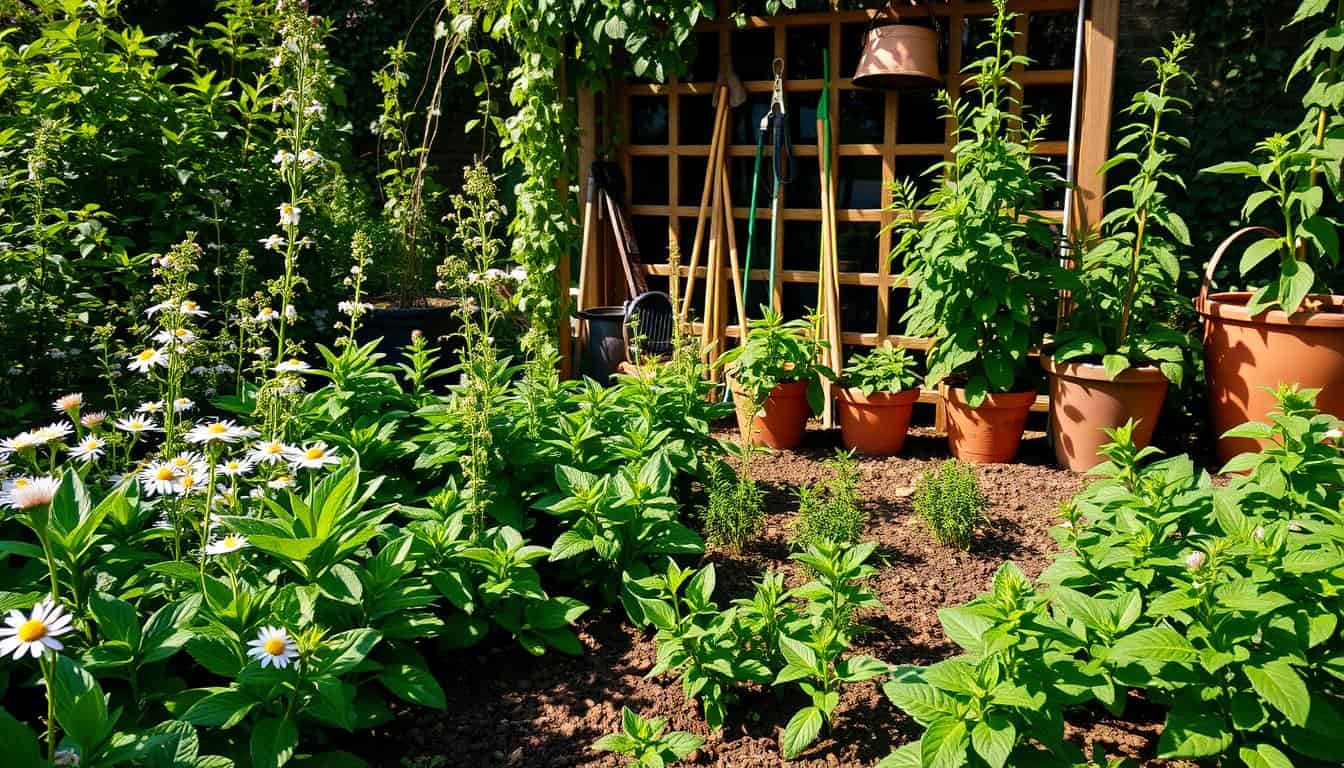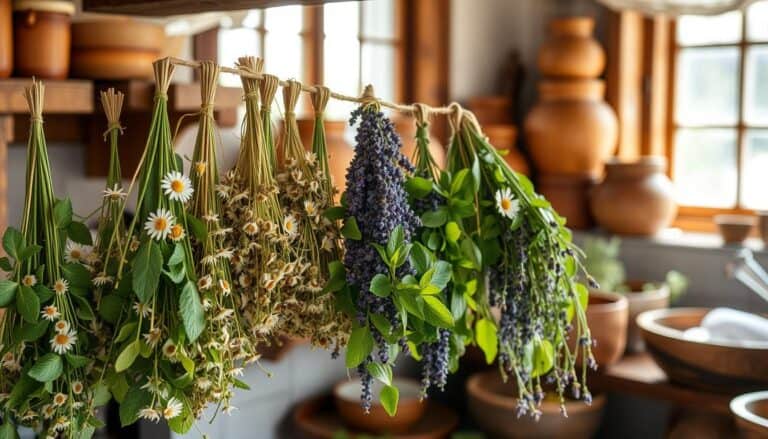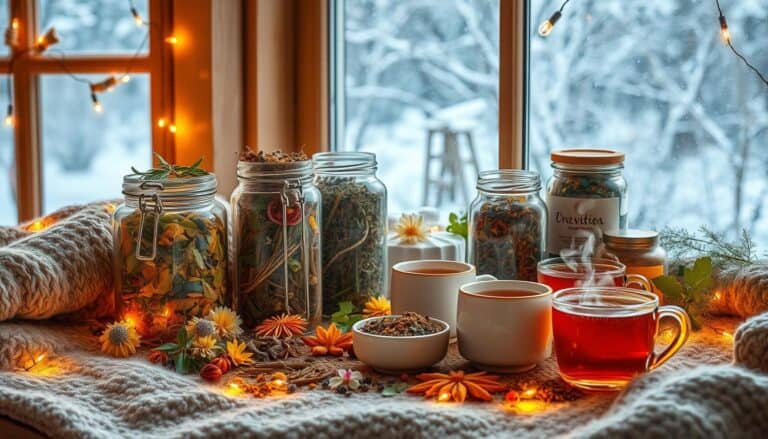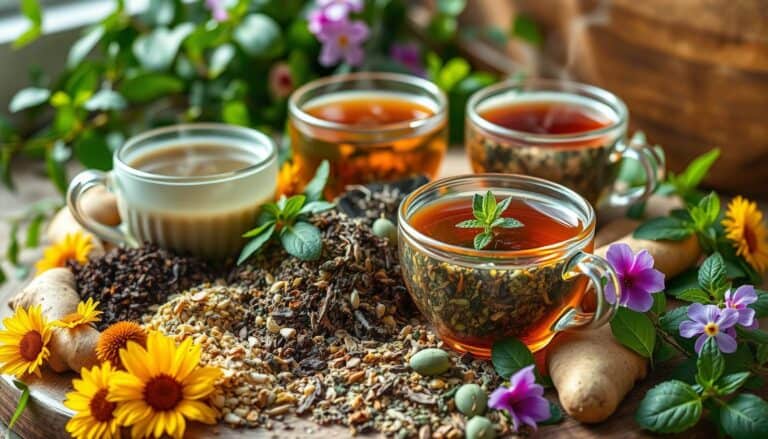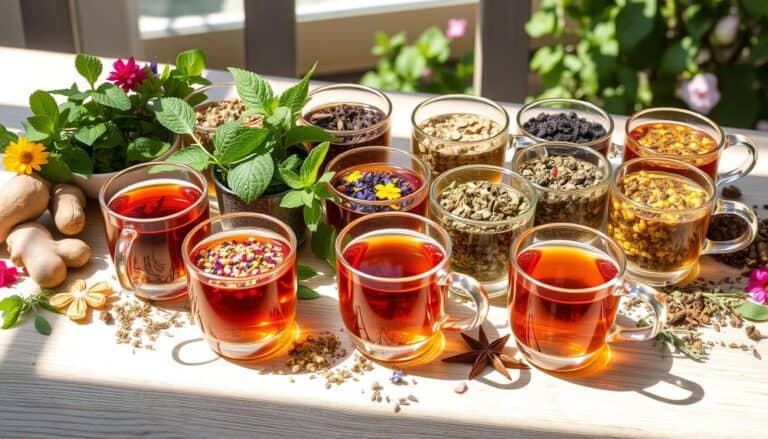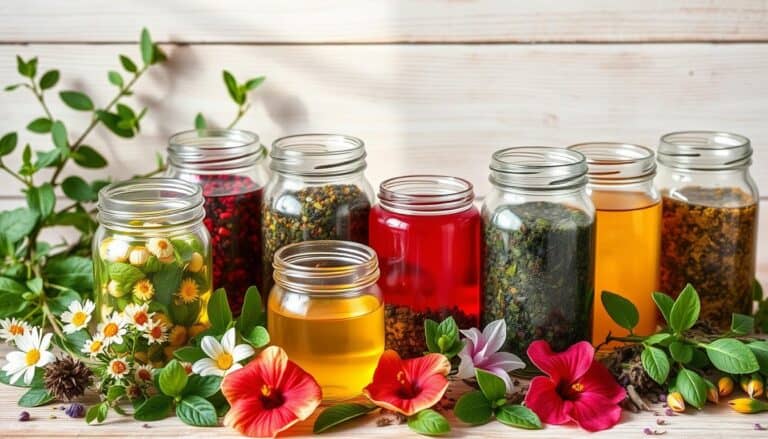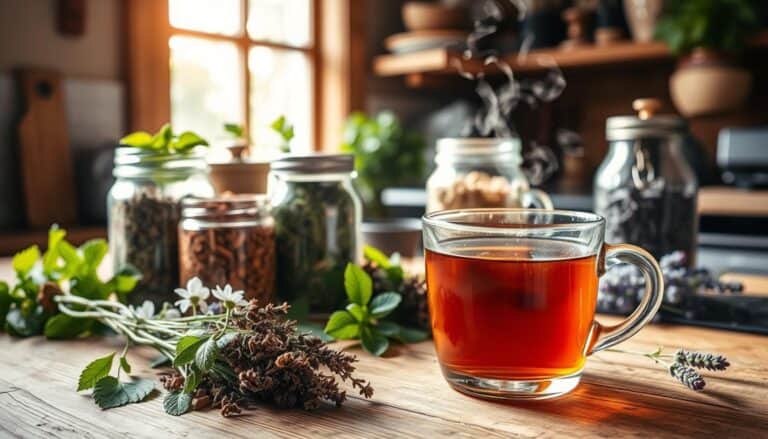From Garden to Cup: Growing Your Own Tea Herbs
This post may contain affiliate links which means I may receive a commission for purchases made through links at no extra cost to you. I only recommend products I truly believe in. Thank you for your support!
Starting to grow your own tea herbs turns a simple garden into a lively spot for health. It lets you connect with nature and make tasty herbal drinks at home.
Herb gardening is more than a hobby. It helps you see how plants and health are connected. You can grow teas in big backyards or small balconies, making it fun for all who love natural remedies.
Choosing the right herbs and knowing how to grow them is key. Herbs like mint and chamomile add special flavors and health perks. Growing your own herbs means you control the tea’s quality, freshness, and purity.
This guide will show you how to turn your garden into a tea herb paradise. You’ll learn how to plant, care for, harvest, and brew herbs. This will make your tea experience truly special.
Benefits of Growing Your Own Tea Herbs
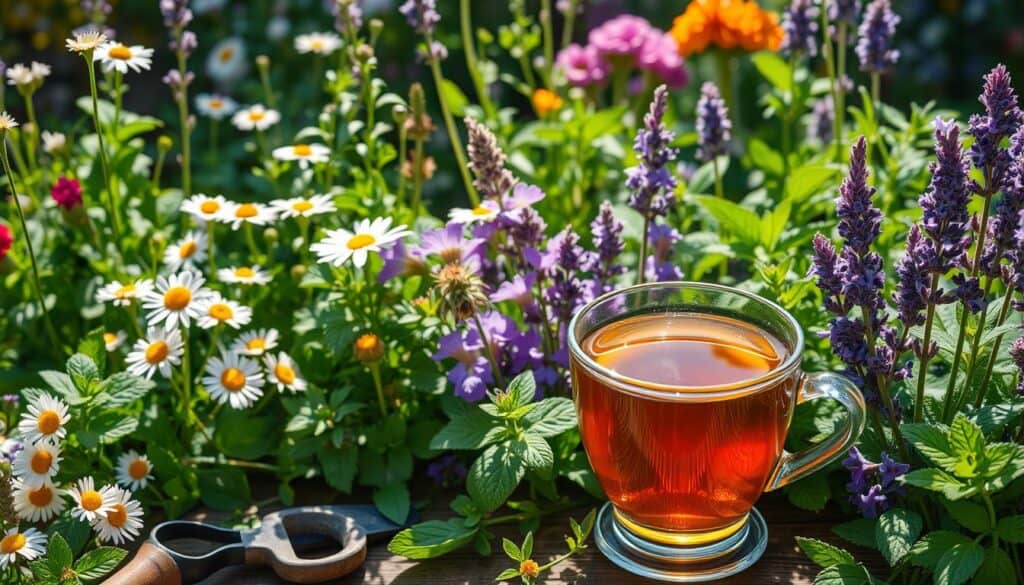
Growing your own herbal infusions can greatly improve your health and the planet. It turns your garden into a lively, healthy space. It’s more than just a pretty view.
Health Advantages of Herbal Teas
Tea herbs from your garden offer health perks that store-bought ones can’t. Studies show they can:
- Support digestive health
- Promote relaxation
- Boost immune system function
- Provide essential minerals and vitamins
Cost-Effectiveness of Homegrown Herbs
Having your own herb garden saves money on groceries. Zones 3-11 are perfect for growing many tea plants. This makes it easy for most gardeners to start.
| Herb | Annual Savings | Growth Difficulty |
|---|---|---|
| Peppermint | $50-$75 | Easy |
| Chamomile | $40-$60 | Moderate |
| Lemon Balm | $30-$45 | Very Easy |
Environmental Impact of Home Gardening
Starting a garden is a step towards a greener life. Growing tea herbs cuts down on waste and emissions. It also helps local wildlife.
Your garden is more than a hobby. It shows your commitment to health and the environment.
Ideal Tea Herbs for Beginners
Starting a tea herb garden can feel daunting, but some herbs are great for beginners. These easy-to-grow plants add tasty flavors and health benefits to your tea. They make gardening and tea blending fun.
Choosing the right plants is key for a beginner’s tea herb garden. Here are some herbs that are perfect for those new to gardening and tea:
- Chamomile: A gentle, calming herb
- Peppermint: Refreshing and digestive-friendly
- Lavender: Aromatic and relaxing
Chamomile: A Calming Choice
Chamomile loves full sun and grows about 1.5 feet tall. It has delicate flowers that taste like apples and bloom around Mother’s Day. Its ability to self-sow is a big plus for beginners.
Peppermint: Refreshing and Uplifting
Peppermint is super easy to grow and spread. It needs lots of water and sun, reaching about one foot tall. Its flavor changes with the seasons, making it great for tea blending.
Lavender: Aromatic and Soothing
Lavender has a calming scent and is used in many herbal remedies. It thrives in sunny spots and has uses beyond tea, like in aromatherapy and cooking.
| Herb | Sunlight | Height | Harvest Time |
|---|---|---|---|
| Chamomile | Full Sun | 1.5 feet | Late Spring |
| Peppermint | Full Sun | 1 foot | All Season |
| Lavender | Full Sun | 2-3 feet | Summer |
These herbs not only taste great but also have health benefits. Adding them to your garden will give you a versatile tea collection. It will support both your cooking and wellness goals.
Best Growing Conditions for Tea Herbs
Creating the perfect environment for growing tea herbs is key. It ensures they are flavorful and healthy. Garden planning involves many factors that affect plant growth and tea quality.
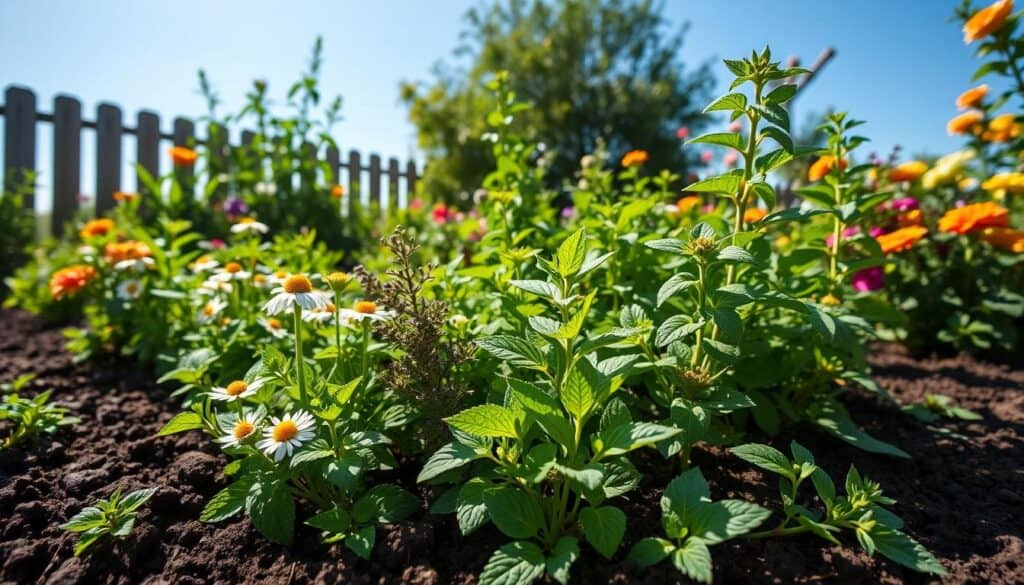
For successful organic gardening of tea herbs, knowing their environmental needs is crucial. Each herb has its own preferences. This knowledge is vital for home gardeners.
Sunlight Requirements for Herb Growth
Sunlight is vital for herb growth. Most tea herbs need specific light conditions:
- Full sun (6-8 hours daily): Lavender, thyme, rosemary
- Partial shade (4-6 hours): Mint, lemon balm
- Adaptable light conditions: Chamomile
Soil Types for Optimal Herbal Development
Choosing the right soil is key for herb cultivation. Soil that drains well and is rich in nutrients promotes strong growth.
| Herb Type | Ideal Soil pH | Soil Composition |
|---|---|---|
| Peppermint | 6.0-7.5 | Rich, moist loam |
| Chamomile | 5.6-7.5 | Sandy, well-drained |
| Lavender | 6.5-8.0 | Alkaline, rocky |
Watering Practices for Enhanced Flavor
Proper watering is crucial for rich herb flavors. Consistent moisture without too much water is best for growth.
- Water deeply but infrequently
- Use mulch to retain soil moisture
- Monitor individual herb water requirements
By understanding and applying these growing conditions, gardeners can grow vibrant, flavorful tea herbs in their backyard.
Planting Your Tea Herb Garden
Starting a tea herb garden needs careful planning and design. You can choose between container gardening or raised bed gardening. The right choice can make your garden both productive and beautiful.
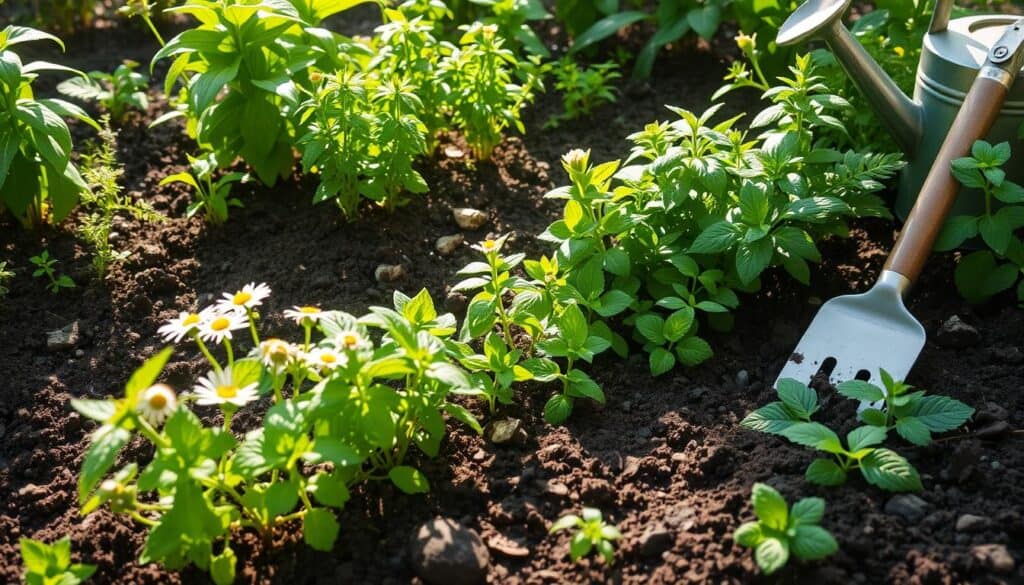
Seed vs. Seedling: Making the Right Choice
When starting your tea herb garden, you must decide between seeds or seedlings. Seeds are cost-effective and offer more variety. Seedlings grow faster and establish themselves quicker.
Some herbs, like Melissa officinalis (lemon balm), grow well from both seeds and transplants.
Planting Techniques for Different Herbs
Each herb needs a specific planting method for the best growth and flavor:
| Herb | Planting Depth | Sunlight Requirement |
|---|---|---|
| Nettle | Surface sow | Partial shade |
| Tulsi | 1/4 inch deep | Full sun |
| Chamomile | Shallow planting | Full to partial sun |
Companion Planting for Enhanced Yields
Companion planting can boost your herb garden’s yield and natural pest control. Here are some strategies:
- Plant thyme near rosemary for better growth
- Keep mint away from other herbs to stop it from spreading
- Use bronze fennel to attract beneficial insects
Successful tea herb gardening requires knowledge, patience, and a love for these plants. By knowing each herb’s needs, you’ll grow a lively garden. It will give you fresh, tasty ingredients for your homemade teas.
Maintenance Tips for Thriving Herbs
Keeping your herb garden healthy needs regular care. It’s important to know what your plants need and use good maintenance methods.
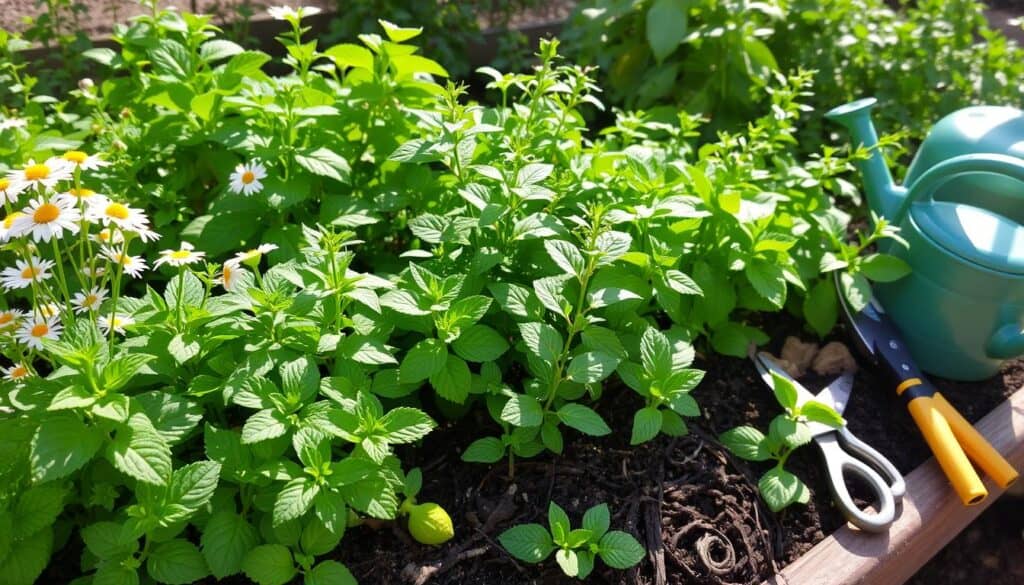
Organic Fertilization Strategies
Using organic fertilizers helps your herbs grow strong and taste better. Pick natural fertilizers that give your plants the nutrients they need without harmful chemicals. Here are some tips for fertilizing:
- Apply organic fertilizers monthly during the growing season
- Use compost or worm castings for nutrient-rich soil
- Select fertilizers specific to herb plant requirements
Pruning Techniques for Herb Health
Pruning is key to keeping your herbs healthy. Trimming them regularly makes them bushier and stops them from flowering too early. This can change how they taste. Here are some pruning tips:
- Cut back stems just above leaf nodes
- Remove dead or yellowing leaves
- Harvest herbs frequently to stimulate new growth
Natural Pest Control Methods
Keeping pests away from your herbs is important. Use natural methods to protect your plants without harming the environment. Here are some ways to control pests:
- Implement companion planting to deter insects
- Use neem oil for organic pest management
- Introduce beneficial insects like ladybugs
- Create homemade insecticidal soap solutions
Pro tip: Watch your herbs closely to catch pest problems early and keep your garden healthy.
Harvesting and Drying Your Tea Herbs
Turning your homegrown herbs into tea is a journey. It starts with harvesting and ends with drying. These steps keep the herbs’ oils and flavors intact.
The Best Time to Harvest
When to pick herbs is key. Harvest them on dry, sunny mornings. This way, you get the most flavor and oils for your tea.
- Harvest just before herbs begin flowering
- Use clean, sharp shears to cut herbs
- Select herbs when they are at their peak freshness
Techniques for Drying Herbs
Drying herbs right is essential. Air-drying is the best way to keep herbs fresh. Make small bunches and hang them in a warm, airy spot, but not in direct sunlight.
- Clean herbs gently to remove dust
- Tie herbs in small bundles
- Hang in a dark, dry space with good air circulation
- Check regularly for complete dryness
Storing Dried Herbs for Freshness
Once dried, storing herbs is crucial. Airtight containers in cool, dark places keep herbs fresh for up to two years. Glass jars with tight lids are best for keeping flavors and nutrients.
- Use glass containers with airtight seals
- Store in a cool, dark pantry
- Label containers with harvest date
- Check periodically for moisture or spoilage
Brewing Your Homegrown Tea
Turning your fresh herbs into tea is a special art. It connects you with nature’s tastes. Your homegrown herbs let you make unique teas that store-bought ones can’t.
Mastering Different Brewing Methods
Tea brewing methods change with the herb type. For soft leaves and flowers, follow these tips:
- Infusion method: Use 1 teaspoon dried herbs per cup of water
- Water temperature: About 195 degrees Fahrenheit
- Steeping time: 3-7 minutes
Creating Unique Herbal Blends
Creating great tea starts with mixing herbs well. Try mixing herbs to find new tastes. Some great pairs are:
- Mint with lemon balm
- Chamomile and lavender
- Rosemary and lemon verbena
Elevating Your Tea’s Flavor Profile
Adding natural sweeteners and spices can make your tea amazing. Try these:
- Honey for sweetness
- Citrus zest for a fresh taste
- Cinnamon for warmth
- Ginger for spice
Remember, each herb adds its own special touch. The trick is to mix flavors well without losing the herb’s essence.
Inspiring Recipes Using Homegrown Herbs
Turning your garden’s herbs into tasty teas and dishes is a fun adventure. It brings new flavors and creativity to your kitchen. Home gardeners can make their cooking and drinks better by using fresh herbs from their garden.
Classic Herbal Tea Recipes
Begin with classic teas like peppermint and chamomile. For peppermint tea, use 3-5 tablespoons of fresh mint leaves in boiling water for 3-5 minutes. Chamomile tea is calming, made with fresh flowers picked on a dry morning.
Creative Blends for Every Mood
Try mixing herbs for new tastes. A rosemary and thyme tea boosts mental focus. Or, blend lavender and lemon balm for a calming drink. These mixes excite your taste buds and might even help your health.
Incorporating Herbs into Culinary Dishes
Use herbs in more than just tea. Add mint to summer salads, roast veggies with rosemary, or make thyme-infused olive oil. Homegrown herbs make simple meals into special dishes.
